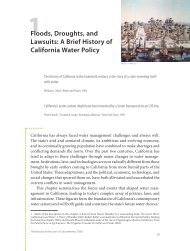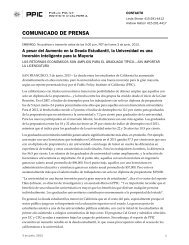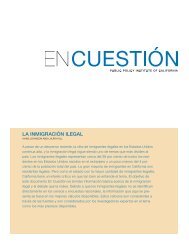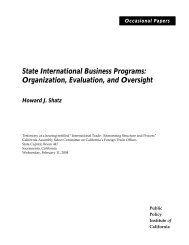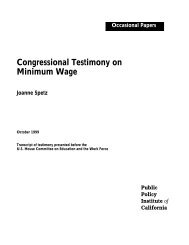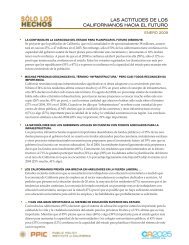Transportation Spending by Low-Income California Households ...
Transportation Spending by Low-Income California Households ...
Transportation Spending by Low-Income California Households ...
You also want an ePaper? Increase the reach of your titles
YUMPU automatically turns print PDFs into web optimized ePapers that Google loves.
7. Policy Strategies for<br />
Affordable <strong>Transportation</strong><br />
In response to MTC’s request for a menu of strategies, this chapter<br />
presents and discusses a variety of policy options for addressing<br />
transportation affordability. The data analyses in Part I focused on costs<br />
and expenditures, and although the resulting findings help illuminate the<br />
issue of affordability, information on costs and expenditures alone<br />
cannot provide definitive answers about the extent to which<br />
transportation is affordable. The essence of the notion of transportation<br />
affordability is that the cost of transportation should not be a barrier to<br />
access to essential destinations, such as jobs and health care. Although<br />
the cost of transportation plays a key role in transportation affordability,<br />
the ability of households to pay for transportation is also affected <strong>by</strong><br />
other factors that were not included in the data analysis in Part I—such<br />
as household wealth, access to credit, the cost of competing budget<br />
items, the geographic relationship between home and basic destinations,<br />
and the quality of transportation services available for a given price. The<br />
policy menu developed in this chapter therefore takes a broader<br />
perspective than the first part of the report. Because the options<br />
presented in this chapter do not flow from the earlier data analysis, we do<br />
not offer any strong policy recommendations.<br />
When evaluating strategies to make transportation affordable, one<br />
must examine the overall benefits of each course of action. Some policy<br />
options listed below may require greater out-of-pocket expenses than<br />
others yet provide enough gains in mobility or reductions in travel time<br />
to yield a larger net gain for low-income households. Policymakers must<br />
also consider the social costs and benefits of the policies. Certain options<br />
might improve transportation affordability for low-income households<br />
yet decrease the monies available for competing priorities, including<br />
other services that benefit low-income families. In addition, other<br />
99



